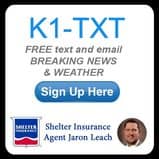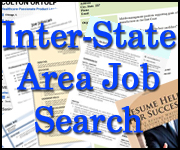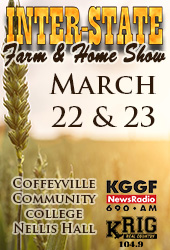News
Schools
Posted: Jul 21, 2020 1:15 AMUpdated: Jul 21, 2020 1:15 AM
BPS Back-to-School Plan Approved

These guidelines are shared with our school communities, including students, families, and staff, in an effort to mitigate the risk of transmission of COVID-19. Over the summer, multiple committees which included administrators, teachers, health and safety personnel, parents, and students have been working to craft carefully layered, flexible, and developmentally appropriate practices reflecting advice given by the American Academy of Pediatricians, including its recent joint statement with leading education organizations, which included: Educators and pediatricians share the goal of children returning safely to school this fall. ... Science should drive decision-making on safely reopening schools. Public health agencies must make recommendations based on evidence, not politics.
A host of reasons support that recommendation, from the importance of in-person learning to the damage of social isolation. However, safely meeting that goal will require everyone to work together.
We also recognize that some families will still prefer to enroll students in at-home/virtual learning environments via the Bruin Virtual School, which allows students from ANY grade level to remain a Bruin and receive instruction from our own highly qualified teachers with support services. Middle school and high school students in the Bruin Virtual School can still opt to participate in some on-campus programs, including athletics and performing arts.
The information presented in this public summary is shared so that all of our community can begin school with a shared understanding of our responsibility in keeping our students and staff safe from COVID-19. We know we cannot eliminate the virus; but with wise choices, we can mitigate it.
LAYERED MITIGATION PRACTICES
DAILY TEMPERATURE CHECKS - Each morning, families are asked to take their children’s temperatures, as a fever of 100°F or higher may be an indication of an active case of COVID-19. Please keep a child with fever home to monitor for additional symptoms. District staff are expected to complete an on-site temperature check each day at designated stations.
RESPONSE TO POSSIBLE SYMPTOMS - While many children will initially have a cough, shortness of breath, or fever, many will not. Other symptoms that may develop at first include chills, cough, headache, loss of taste or smell, sore throat, congestion, runny nose, nausea, vomiting, or diarrhea, belly pain, a rash, red cracked lips or red eyes, swelling of the hands or feet, joint pain, dizziness, vision problems, or a pale appearance. Any of these are cause for keeping a child at home and for staff to take sick leave. See pages 6-7 for details.
The primary way the virus spreads is through close contact from person-to-person, so face coverings and physical distancing are crucial protections, particularly for students ages 10 and above.
FACE COVERINGS - There is strong evidence that face coverings for both the nose and mouth help interrupt the spread of COVID-19 by protecting both the wearers and those with whom they come in contact. This includes cloth masks, neck gaiters, face shields, and other CDC-recommended masks.
PHYSICAL DISTANCING - While it will be difficult to maintain distance between the students at school, each site will be devising plans to maximize distancing in classrooms, cafeterias, and gyms.
HYGIENE - Handwashing is one of the best ways to prevent many infections. Students will be reminded to wash their hands often with soap and water for at least 20 seconds, especially after blowing their noses, coughing, or sneezing; going to the bathroom; and before eating. They will also have access to hand sanitizer stations throughout the school when hand-washing facilities are not readily available.
FACE COVERINGS FOR STUDENTS-Students are reminded that by wearing a face covering at school, they are protecting both themselves and those around them. As the school year commences, every student will be supplied with a neck gaiter. The optimal, safest situation to prevent viral spread is for all students and staff to wear face coverings over their mouths and noses at all times except when eating or drinking. When a student wears a face covering, it is a sign of respect for both classmates and teachers and by extension confirms that the wearer understands his/her responsibility to his/her immediate, extended, and school families and the greater community.
For this reason, face coverings will be part of the dress code for middle schools and high schools to be worn throughout the day - on school buses, in hallways, or in classrooms. Elementary school students will be steadily encouraged and trained to wear face coverings whenever social distancing is difficult or not feasible. We realize that safely and consistently wearing a face covering becomes more feasible as students mature into the upper elementary grades. We also recognize that some students have special conditions or may otherwise be non-compliant, which may necessitate reasonable and non-stigmatizing alterations in their instructional environments to help protect them, other students, and staff members.
Face coverings will be needed for bus transport, with students expected to board wearing one or wear one provided by the driver. Coverings are to be kept on as students exit the bus and enter the school.
ARRIVAL & DISMISSAL- As students arrive at school in the morning, they will be directed to classrooms or general areas where social distancing is feasible. Students will not be gathered in large groups to wait for their school day to begin. Parents will not be escorting their children into the building, except as may be initially approved for Pre-Kindergarten & Kindergarten children. Parents will be asked to remain in their cars and drive through the drop-off line to ensure a safe exit from and entrance into their family vehicles. Dismissals may include releasing students in a staggered manner to avoid overcrowding corridors and following social distancing guidelines by not waiting in large groups.
BEFORE & AFTER SCHOOL CARE- Guidelines are being developed by the sponsoring Richard Kane YMCA to complement the district’s protocols for the remainder of the day. Small assigned groups that still maintain physical distancing are likely to help limit viral spread. A drop-off and pick-up for daycare will likely take place at an entrance to each Before & After Care program without parents exiting the family vehicle, using cell phones, etc.
BREAKFAST & LUNCH - Students will wash hands or use hand sanitizer prior to eating. As much as possible, students will have 6’ physical distancing. Classroom space and district staffing may affect whether meals can be in a classroom or must be in cafeterias, gyms, etc. at marked locations. No guests will be allowed to have lunch on-site as long as there is community spread of COVID-19. Parents are encouraged to limit the times they check their students out for lunch to minimize unnecessary potential exposure.
SNACKS- Due to the threat of infection, no classwide snacks will be allowed or distributed at school unless they are commercially pre-packaged individual servings. Students choosing to bring a snack to school may bring an individually home-wrapped snack for themselves.
SUPPLIES- Sharing of supplies such as crayons, markers, scissors, and pencils will be restricted. Students/teachers will keep their individual supplies separated from those of others in individually labeled containers, cubbies, etc. Manipulatives and other instructional items will be sanitized prior to use by another student.
RECESS- Sites with recess will develop schedules to allow daily outdoor playtime for students. Recess schedules may vary in order to limit the number of students in any one area. Students returning from recess must wash their hands.
SCHOOL ACTIVITIES- Extra and co-curricular activities such as marching band, vocal music, STUCO, drama, and athletics of all descriptions are vital elements of a secondary school student’s experience. Responses to COVID-19 in these environments will vary, with a keen eye to proven practices in prevention and protection.
It is difficult to predict what the interscholastic sports seasons will look like. The district will continue to draw upon expert advice and guidelines for safe play from state and national organizations. It is equally uncertain what the high school and middle school fan experience will include. Our hope, especially for outdoor sports, is that fans will be able to enjoy activities by engaging in proper physical distancing and choosing to wear facial coverings. Face coverings will be strongly recommended or might need to be required for any indoor fan experiences that we could offer.
ASSEMBLIES- In-person assemblies and multi-classroom groupings will be suspended throughout community spread of the virus to avoid the likely possibility of exposure, which is especially acute when many students gather to chant, cheer, etc. Virtual assemblies and the like will be feasible with the projection/display technology in each classroom.
MEDIA CENTERS- Honoring the importance of reading and research, the school media centers will remain open for student use. There will be necessary changes in routines, scheduling, spacing, and sanitation.
WATER FOUNTAINS & RESTROOMS- We encourage students and staff to bring filled water bottles or other non-breakable water containers to school, since traditional “bubble up” water fountains might need to be disabled. Student and staff restrooms will be sanitized at least twice per day by site custodial staff.
COVID-19 SYMPTOMS AT SCHOOL- If a teacher suspects that an elementary school student may have COVID-19 symptoms (see page 6 for signs & symptoms), he/she will contact the office to arrange for an adult to come to the classroom and escort the student to a check station. Middle school and high school students will be sent or escorted to a check station as is appropriate. Parents will be contacted immediately to pick up symptomatic students and seek a medical opinion, with students supervised in an isolation room until they can be picked up.
EXPOSURES, DIAGNOSES, & RETURN TO SCHOOL AFTER COVID-19 In regards to exposures, diagnoses, and positive tests:
● Anyone who has had close contact with someone positive for COVID-19 should stay home for 14 calendar days after exposure, based on the time it takes to develop the illness. Distance learning will be provided whenever feasible. Due to false negatives, testing is not an easy way to end self-quarantine. See page 5 for details.
● Any child who tests positive or has apparent COVID-19 symptoms may return to school after three days with no fever and improved respiratory symptoms and ten days since symptoms first appeared or, if the child never has symptoms, ten days after a positive test sample is taken. See pages 6-7 for advice on children who have symptoms or test positive.
○ CDC Temperature/Symptom Log
● Parents are required to report to the school any children who test positive for COVID-19 so that deep cleaning of affected areas and any required self-quarantines for close contacts can be performed.
« Back to News















